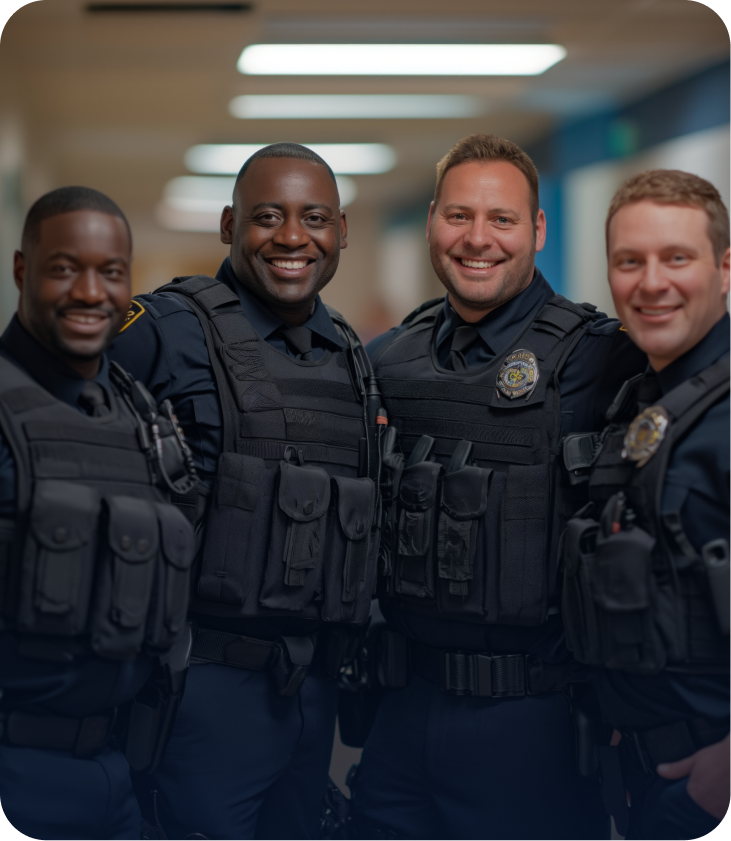09.12.2024 | ANTHONY TASSONE
Tackling Retention and Turnover by Reinforcing a Culture of Excellence and Pride

In 2018, The International Association of Chiefs of Police released Best Practices Guide: Recruitment, Retention, and Turnover.
Though 2018 is long gone, current-day law enforcement agencies still struggle with the same issues—arguably, even more so.
Let’s take turnover for a spin. How many departments do you know that are “always hiring”? “Inadequate Recognition” was cited in the document as one of the greatest internal factors impacting officer retention
“Positive reinforcement is the easiest, least expensive, and best way to improve good performance. When individuals do not receive this recognition, the exceptional performance will likely diminish.”
The document goes on to say, “By immediately reinforcing good behavior and addressing poor performance before it becomes a problem, supervisors make sure their officers are working at peak performance, building their self-confidence, and anchoring them to the department.”
To be honest, who doesn’t appreciate a pat on the back? Officers do not do what they do for praise, same as any other first responder, but it’s always nice to receive positive feedback. Especially when you have gone above and beyond in the line of duty.
The document says that “feeling valued is a basic human need” and “good behavior that receives recognition is likely to be repeated”. Conversely, as noted above, the lack of positive reinforcement breeds an unfavorable environment for encouraging officers to do more and be more.
So how do we recognize good behavior, high professionalism, great community engagement, heroism, and the like?
There are many methods through which officers can be provided positive feedback:
Acknowledging the officer’s act(s) of professionalism through a verbal “thank you” or “job well done” can be more powerful than one would think.
Writing a letter of commendation, achievement, or appreciation is another good way to recognize and reinforce positive behavior. This can also be placed in the officer’s personnel file and follow the officer through his/her career.
Providing regular morale meetings or check-ins can be effective in improving morale and offering positive reinforcement. “Morale or pride meetings provide opportunities for social interaction to improve communication and trust among officers. During these meetings, supervisors can announce officers who achieved advanced certifications, are being promoted in the career ladder, or performed well in various instances. These meetings also provide a good opportunity to highlight creative or innovative procedures to address a problem. The entire focus of these meetings is on the positive activities being completed by officers and the department.”
How can you find out the “good” that your officers are doing?
1. Community Surveys and Feedback Forms
Distribute surveys in person or online that specifically ask community members to share positive interactions they've had with officers. Make it easy for them to provide feedback through QR codes or web links.
2. Social Media and Online Platforms
Encourage community members to share positive stories on the department’s social media pages or through dedicated email addresses. Highlight these stories on the department’s website or social channels.
3. Citizen Advisory Committees
Establish citizen advisory committees or focus groups that meet regularly and can provide direct feedback on officers' performance, including positive interactions.
4. Community Events and Meetings
Attend community events, town halls, or neighborhood meetings where residents can provide direct feedback about officers who have made a positive impact.
5. Recognition Programs
Create a program that allows citizens to nominate officers for formal recognition. This could be done via the department’s website, local businesses, or community partners.
6. Follow-Up on Service Calls
After service calls, follow up with community members to ask about their experience and whether there was anything particularly positive about the officer’s conduct.
7. Ride-Alongs and Citizen Academies
Offer ride-alongs or citizen police academies where participants can experience officers’ work firsthand and provide positive feedback afterward.
8. Partner with Local Media
Work with local media to share stories of positive policing. Media outlets often appreciate good news stories, and this can encourage public feedback.
9. Peer Recognition Programs
Implement a peer recognition program where officers can commend each other for positive actions, which supervisors can also review and acknowledge.
10. Customer Service Kiosks
Install kiosks at police stations or public locations where citizens can provide immediate feedback, including positive comments about their experiences. These approaches can help supervisors gather valuable positive feedback that recognizes officers' contributions and fosters a culture of appreciation and engagement within the community.
Conclusion
The challenges of recruitment, retention, and turnover in law enforcement may not be new, but they are persistent. The IACP’s 2018 guide remains relevant today, reminding us that recognition and positive reinforcement are vital in retaining dedicated officers. As departments continue to struggle with high turnover rates, it's crucial to understand the value of showing appreciation for exceptional performance.
Recognizing officers doesn't have to be complex or costly. Simple acts of acknowledgment, regular morale meetings, and structured feedback systems can make a significant impact on an officer's sense of value and belonging. By leveraging community feedback, social media, and innovative programs like TRULEO, agencies can better capture and celebrate positive interactions, reinforcing a culture of excellence and pride within the force.
TRULEO’s technology offers an additional layer of support, providing a comprehensive, unbiased analysis of 100% body-worn camera footage. This not only helps highlight the commendable actions of officers but also provides valuable insights for training and community engagement. By harnessing these tools and strategies, law enforcement agencies can foster a more positive work environment, ultimately improving retention and creating a stronger, more connected community.
International Association of Chiefs of Police. (2018). Recruitment, retention, and turnover of law enforcement personnel.
https://www.theiacp.org/sites/default/files/2018-08/BP-RecruitmentRetentionandTurnover.pdf
“The ability to measure a police officer’s level of professionalism and readiness to de-escalate should be required risk management for every Chief of Police.”
"From command staff to front-line supervisors to the officers on the front line. They all bought into the mission and leveraged BWC analytics as a coaching tool to help us create better outcomes with our community."